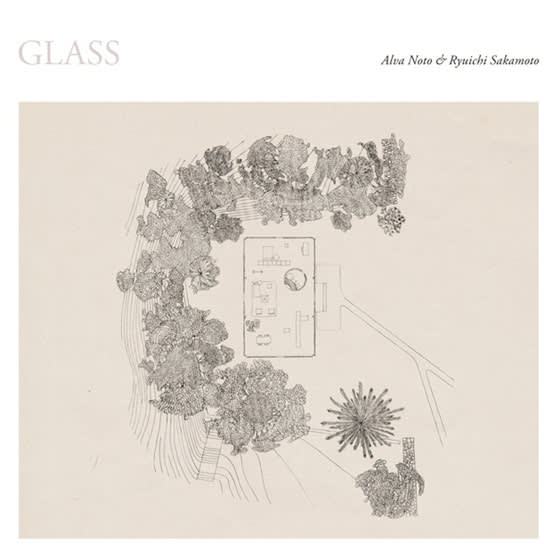To fully appreciate Ryuichi Sakamoto's latest collaboration with German minimalist Carsten Nicolai (Alva Noto), check out the video recording of their Glass performance on Vimeo. This is a complex piece, at least relative to most of what the two have presented in the past. Seeing how it came together at Philip Johnson's celebrated Glass House is part of the fun.
That house has a remarkable history. Johnson designed it between 1945 and 1948. Completed in 1949, Glass House influenced U.S. architecture profoundly, effectively launching the so-called International Style.
Glass is a kind of celebration of that space, and the house itself served as an instrument; Sakamoto taps, pats and drags rubber-headed gong mallets across its rain-soaked walls. They shriek and echo, as though from a distance. Not only does this incorporate the piece's subject, it reminds us that part of the magic of Glass House is its connection to the surrounding landscape.
The mix of acoustic and electronic sounds is beautifully balanced, so much so that it's difficult to tell them apart. When a wave of synthesized sand — the raw material of glass — washes over the piece, the detail is exquisite.
Ambient music centred on glass sounds is nothing new, of course, but the duo's ability to take such a well-worn concept and turn it into a piece so meticulous and touching is a testament to their uniquely fruitful partnership.
(Noton)That house has a remarkable history. Johnson designed it between 1945 and 1948. Completed in 1949, Glass House influenced U.S. architecture profoundly, effectively launching the so-called International Style.
Glass is a kind of celebration of that space, and the house itself served as an instrument; Sakamoto taps, pats and drags rubber-headed gong mallets across its rain-soaked walls. They shriek and echo, as though from a distance. Not only does this incorporate the piece's subject, it reminds us that part of the magic of Glass House is its connection to the surrounding landscape.
The mix of acoustic and electronic sounds is beautifully balanced, so much so that it's difficult to tell them apart. When a wave of synthesized sand — the raw material of glass — washes over the piece, the detail is exquisite.
Ambient music centred on glass sounds is nothing new, of course, but the duo's ability to take such a well-worn concept and turn it into a piece so meticulous and touching is a testament to their uniquely fruitful partnership.
